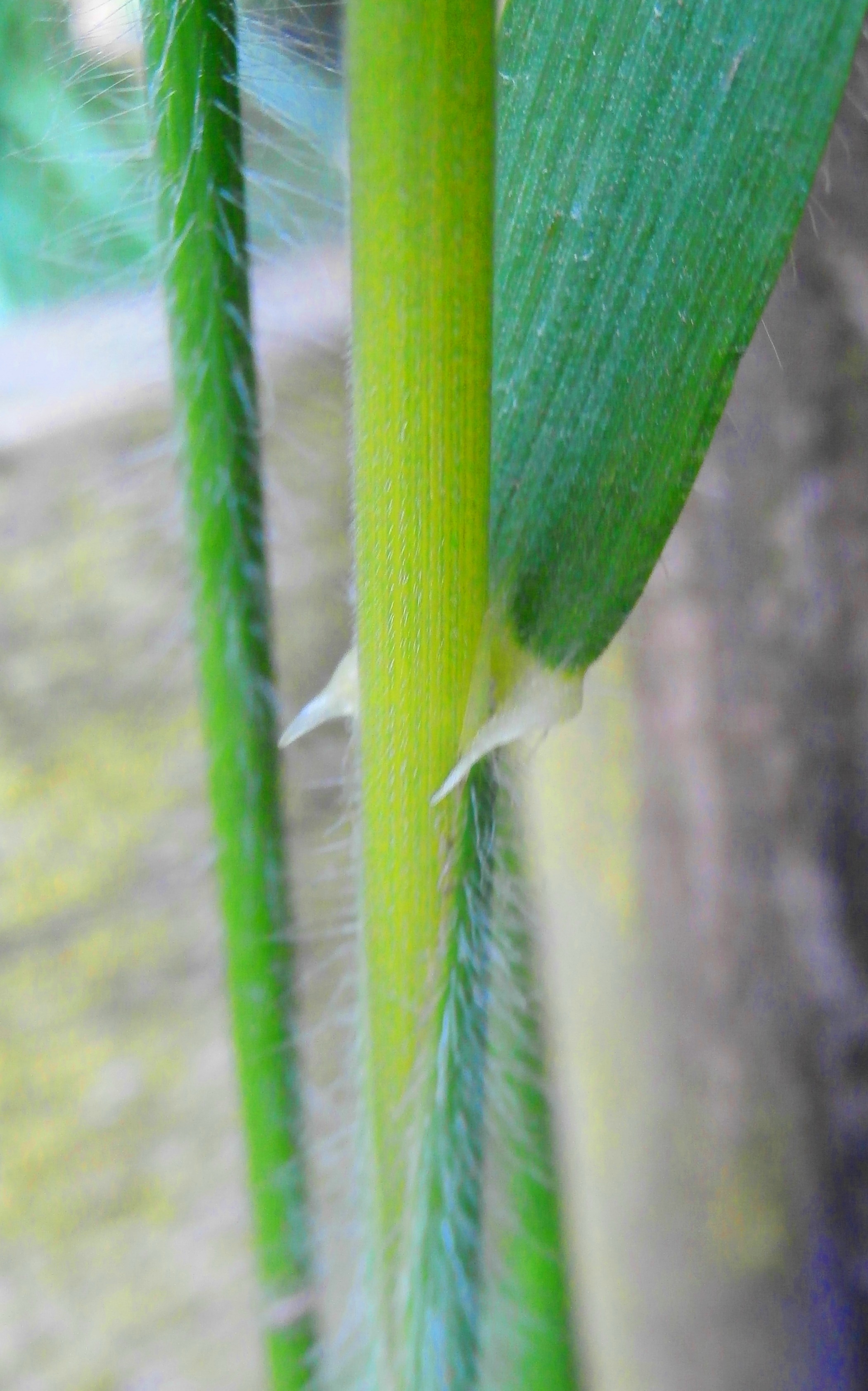Bromus ramosus
The forest - brome ( Bromus ramosus ), also called oat grass, wild oats, brome grass Late forest or Wild Waldtrespe, is a very form- rich plant from the family of grasses ( Poaceae ). There are two subspecies (B. ramosus subsp. Ramosus ) and (B. ramosus subsp. Benekenii ) distinguished by some authors as distinct species, B. ramosus ( Allseitswendige woodland brome ) and B. benekenii ( Einseitswendige woodland brome ) be considered.
Etymology
The genus name is derived from the Greek Bromus bromos = oats. The specific epithet ramosus is of Latin origin and means way branching or branched and takes on the large, overhanging branches of the panicle reference.
Description
Woodland brome are perennial, herbaceous plants growing in small clumps with thin, hairy and erect culms. The stalks bear three to five knots. The grass reaches stature heights between 50 and 150, sometimes to 190 centimeters. The leaf sheaths are usually closed, the upper dense and long hairs ( 3-4 mm) and have short, pointed ears. The about 1 to 3 millimeters long ligule ( ligules ) are finely toothed and membranous. The dark green leaf blades are finely pointed, reaching 10 to 60 centimeters long and 6-16 centimeters wide. They are flat, slightly hairy or nearly glabrous, slightly rough and low hanging.
The loose, open, purple or green panicles are very large with 15 to 45 centimeters in length. The branches of the panicle are usually in pairs far away and are alternately arranged on the opposite sides of the permanent four-sided shaft. You last allseitswendig overhanging and carry up to nine spikelets. The panicle branches are rough. The lower branches are almost in pairs and are almost equal in length. Four to zwölfblütigen spikelets are 2-4 inches long, and front narrowed compressed. They are 4-6 mm wide. The ovate to oblong lemma is rounded on the back and three annoying. She wears a 4-8 mm long awn at the tip. This, however, is shorter than the glumes. The flowering period is between June and August.
Bromus ramosus benekenii or B. subsp. benekenii differs by a bald or very finely hairy upper leaf sheath. The ligule is shorter, the leaves are narrower, the panicles are contracted and only einseitswendig. The panicle branches contribute less spikelets. These are smaller and carry fewer flowers.
Distribution and location
Bromus ramosus is used in almost all of Europe except Scandinavia and parts of the Iberian Peninsula. Bromus benekenii is significantly less frequent and occurs in temperate continental climate areas of Europe, parts of Asia and North Africa before. Woodland brome preferably grow in humus-rich, shady deciduous and coniferous forests, preferably in beech forests and in thickets often on shallow soil calcareous soils, nutrient - and base-rich, moderately acidic and loose loam and clay soils ( Mullböden ).
Credentials
- H. Haeupler & Th Muer: Image Atlas of ferns and flowering plants in Germany. Ulmer Verlag, Stuttgart, 2000. ISBN 3-8001-3364-4
- CE Hubbart: Grasses - Description, distribution, use. Ulmer Verlag, Stuttgart, 1985. ISBN 3-8001-2537-4
- E. Oberdorfer: Phytosociological Exkursionsflora. Ulmer Verlag, Stuttgart, 1990. ISBN 3-8001-3454-3








